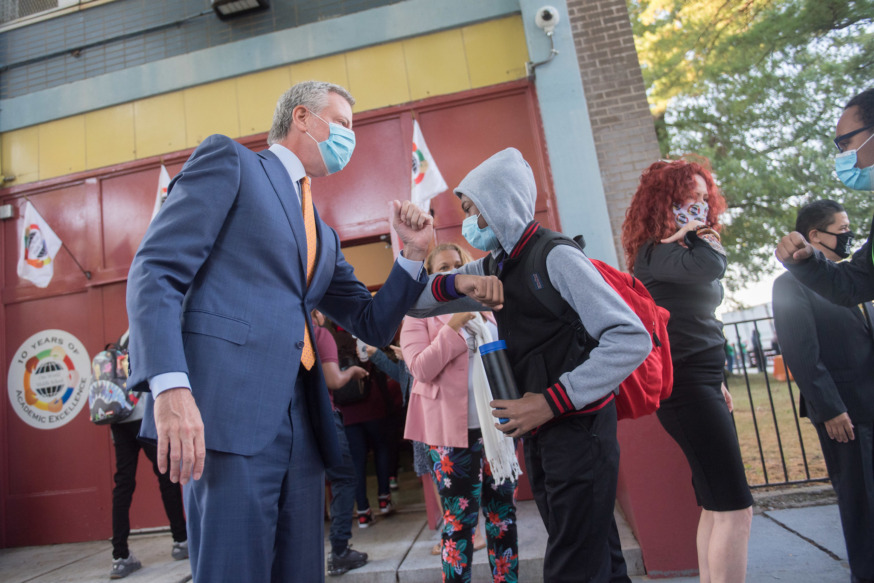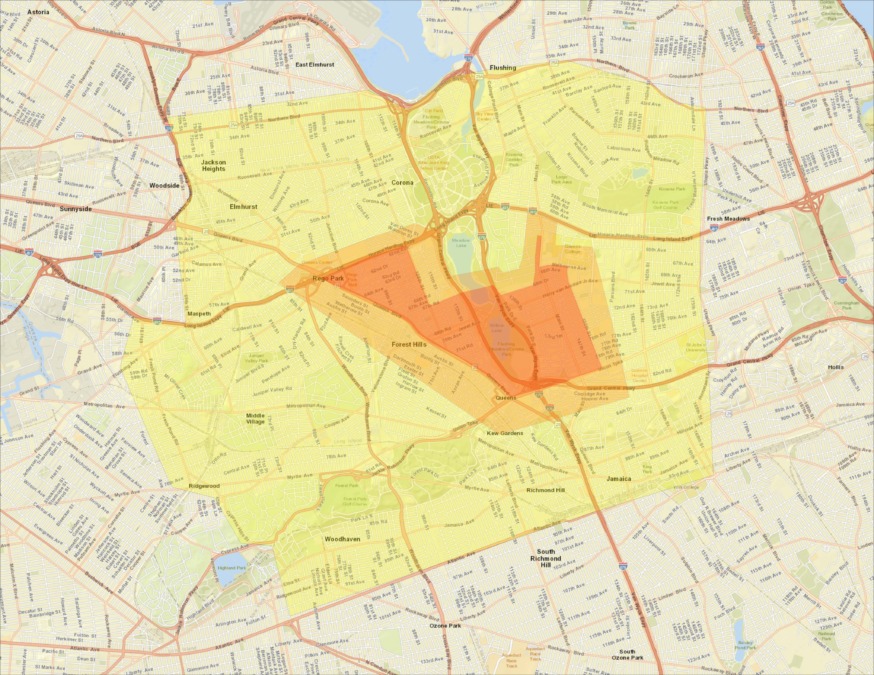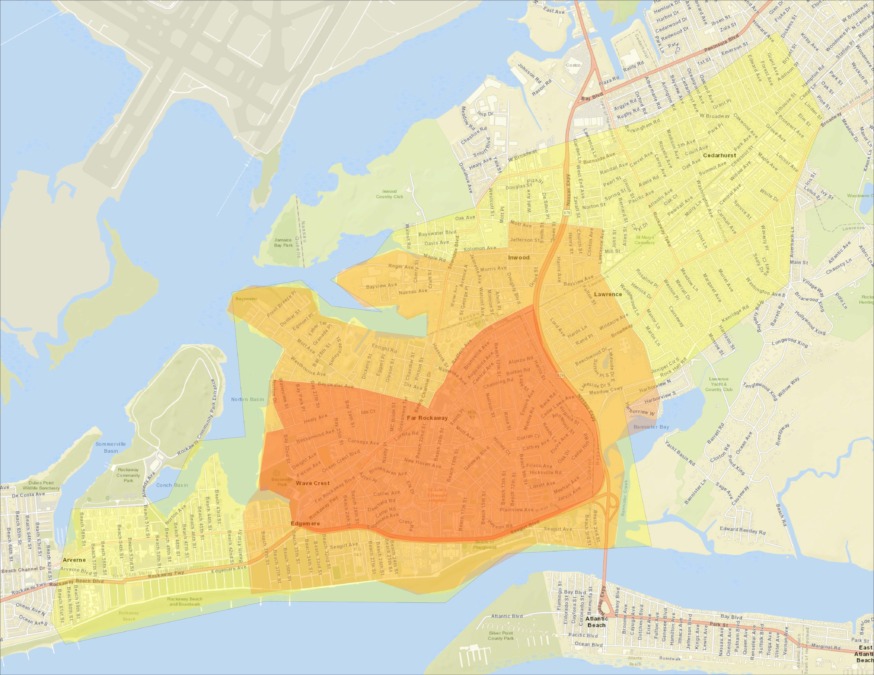
Mayor Bill de Blasio visiting a school in the Bronx last week (Michael Appleton/Mayoral Photography Office)
Oct. 7, 2020 By Allie Griffin
Nonessential businesses must close tomorrow in specific sections of Queens and Brooklyn that are undergoing a spike in COVID-19 cases, Mayor Bill de Blasio announced today.
The businesses in the coronavirus hotspots must shut their doors–and restaurants are only permitted to be open for takeout–for at least two weeks. The shutdown will impact several Queens neighborhoods.
The boundaries for the closures are based on COVID-19 case density data. The state has created three zones around the hotspots: red — where the closures will go into effect, orange and yellow.
No one ZIP code is fully in the red or orange zones, but parts of multiple neighborhoods are in each, de Blasio said.
Parts of Kew Gardens, Briarwood, Kew Gardens Hills, Forest Hills and Rego Park are within one red zone in Queens, according to a map released by the governor yesterday. A second red zone cluster encompasses much of Far Rockaway.
Portions of south Brooklyn–such as Borough Park and Midwood– are within a red zone and are part of the shutdown.

Central Queens cluster and zones (via Governor Andrew Cuomo)
The red zones are the main hotspot areas with the highest density of COVID-19 cases and orange zones comprise an about five-block radius around the red zones as the “warning” areas.
In the orange zones, high risk businesses, such as gyms, must also close tomorrow, as well as both private and public schools. Schools within the red zones have already closed.
Schools within the yellow zone, the “precautionary” zone, will remain open but must do mandatory COVID testing of educators and students each week.
Restaurants in orange zones are no longer permitted to do indoor dining– and are limited to outdoor dining and takeout.
Houses of worship are subject to reduced capacity in the three zones, while mass gatherings in the red zones are completely banned.
The city is working to create an online tool in which New Yorkers can punch in their address–or business address– to see which zone they are in.

Far Rockaway cluster and zones (via Governor Andrew Cuomo)
The mayor is also launching an extensive outreach campaign today to inform business owners and residents in the zones. The outreach efforts include robocalls, more than 1,200 city personnel on foot in the zones, and Small Business Services performing targeted outreach.
De Blasio said he understands that the shutdowns are unpopular, but said they are necessary to stop the spread of COVID-19.
“We need to stop this outbreak dead in its tracks for the good of all New York City,” he said. “Remember we need to do it to save lives. The further the coronavirus spreads again, the more vulnerable people will be reached. We cannot let that happen.”
The hotspot shutdowns must last at least two weeks, but could go longer if the COVID-19 positivity rates don’t improve in the areas.
“The faster we address this challenge, the shorter the shutdown will be,” de Blasio said.
He said people need to comply with the new regulations for the numbers to improve.
“The next few weeks are going to be critical,” the mayor added. “We have the opportunity here to keep this outbreak small to address it, to stop it, to turn it around. It’s up to all of us.”






